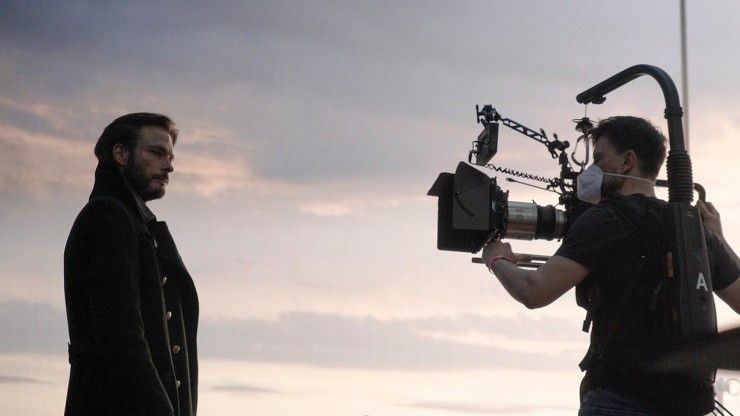
There's an atmospheric and nightmarish new series from Netflix called 1899, and the production team took full advantage of ARRI's virtual production solutions to make that a reality. Literally.
Virtual production en masse effectively began with the first season of The Mandalorian, which debuted in late 2019, and became a near-industry standard way of filming during the pandemic. So much so that ARRI developed a virtual production stage on which the new Netflix series 1899 was filmed.
The Rise of Virtual Production
Virtual production exploded during the pandemic after being pioneered during the filming of The Mandalorian Season 1. You could film anywhere in the world without setting foot outside the virtual production stage.
LED display panels replaced green screens, and XR (extended reality) extended the small pieces of a set into a full-blown something. The results were flawless. Audiences truly felt like the crew filmed on location in a galaxy far, far away. But in reality, it was all done on a virtual production stage.
Even as we move on from the pandemic, virtual production is here to stay as creativity and budgets can be maximized by eliminating globe-trotting, on-location filming.

ARRI's Virtual Production Stage
1899 is a new Netflix show that follows a group of multinationals as they make their way across the ocean on a steamliner, to create new lives in America. But this adventure is much more of a nightmare. Quite literally.
But we won't spoil anything for you.

The production team filmed the series on ARRI's virtual production stage (or "volume"), which they designed and built, and the look is authentic, to say the least. It feels like they built massive sets and used a giant water tank, but in reality, they took advantage of all the virtual production tools and crew that ARRI provided.
Director Baran bo Odar, the team at ARRI Solutions, showrunners, cinematographer Nik Summerer, and many others worked together to bring the entire virtual production set to life. They utilized the now-standard semi-circle with LED screens that allowed for actors, set pieces, lights, crew, and equipment to be encompassed. The stage floor was an actual turntable that spun around for reverse angles and other options, saving hours of time that would otherwise be spent manually moving things 180 degrees.

According to Summerer, lighting was critical, determining "how well you can match the foreground to the background determines how successful the final picture will be," he told ARRI.
"What worked well for me is having a combination of professional luminaires that augment and complement the lighting source established on the volume screens," Summerer said. The team used a "wider spectrum source like the ARRI SkyPanel," which gave them much higher quality skin tone replications within the volume.
Summerer and his team also used the ARRI ALEXA Mini LF, which kept the LED panels out of focus in the background, and as he explained, the camera "gave an immersive, large-format look that I like, and could be fed with a genlock signal to communicate directly with the LED wall."
For lenses, Summerer chose customized anamorphic solutions from ALFA, which gave a nice balance of focus fall-off, highlight flare, and the all-important bokeh. These lenses, along with the lighting and virtual production, gave 1899 its overall atmospheric look.
Another tool that was used was a virtual camera with 3D models, which allowed director Baran bo Odar, Summerer, and the team to do walk-throughs of how the shots would look. This is a big advantage over greenscreen, where most of the VFX is done in post, and the best they have on hand are low-poly pre-viz clips.

Is Virtual Production Here to Stay?
Frankly, yes.
ARRI has made a significant investment in virtual production, from the stage to the ARRI Solutions team. And they aren't the only ones. Studios around the world are making the same investments in LED panels, cameras, and more, to continue growing this new production technique.
But what do you think? Is virtual production here to stay for different types of filmmaking, such as features, shorts, TV shows, commercials, and more? Or is it reserved for specific productions? Let us know in the comments!
Your Comment